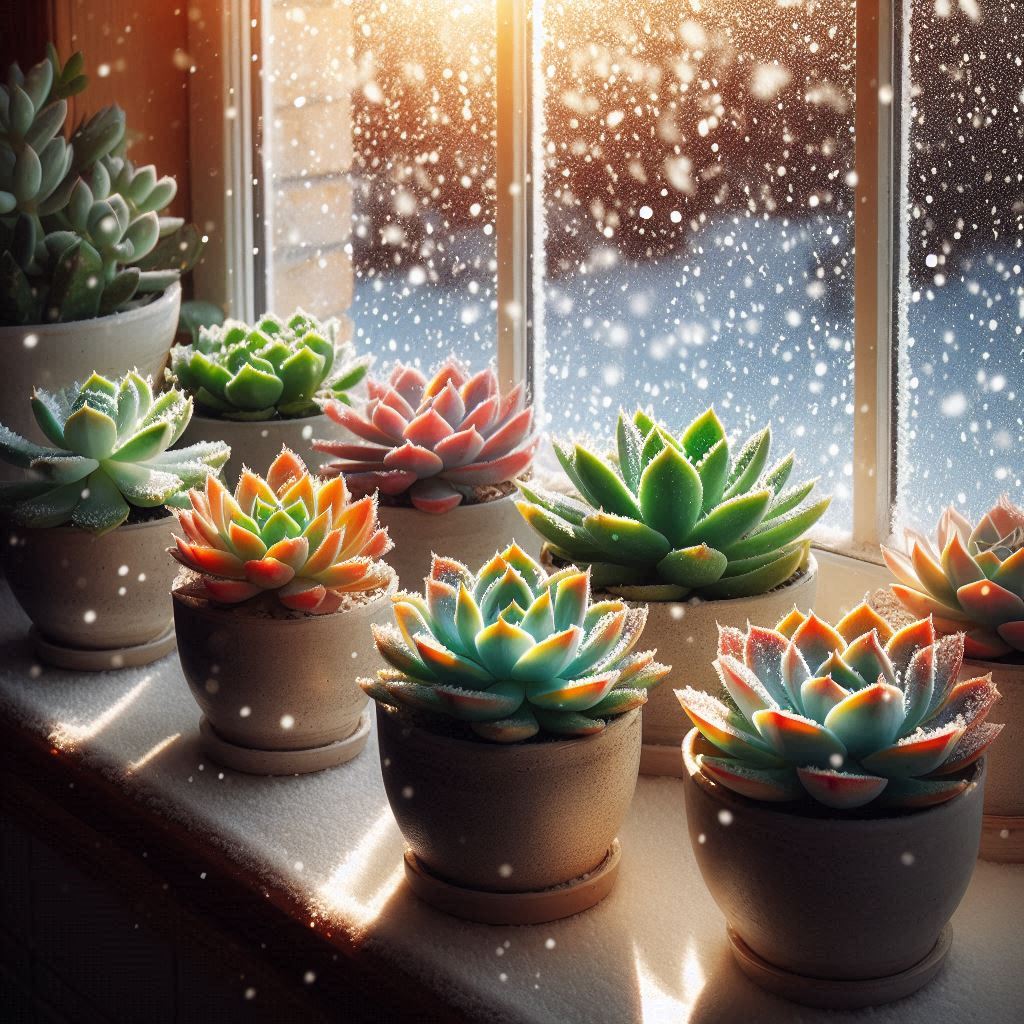Curious about how long succulents live? These fascinating and resilient plants can thrive for years with the right care. In this guide, we’ll explore key factors affecting their lifespan and provide tips to ensure they prosper in your home. From optimizing light and water conditions to recognizing signs of a healthy plant, you’ll be equipped with the knowledge needed to nurture your succulents successfully. Dive in to learn more about creating a thriving environment for your beloved greenery!
Factors That Affect the Lifespan of Succulents
Succulents are beloved for their hardiness, but several factors can influence their lifespan. A crucial aspect is the type of soil. Succulents need well-draining soil to prevent root rot, which is a common life-threatening issue. Watering habits also play a vital role. Overwatering is a leading cause of premature succulent death, so ensuring a proper watering schedule is essential. Light conditions are another significant factor. Most succulents thrive in bright, indirect sunlight, and inadequate lighting can lead to stunted growth and a shortened lifespan.
Moreover, the regional climate affects their longevity. Succulents adapted to arid environments may struggle in humid or cold regions. This is why choosing the right species for your geographical location is important. Temperature extremes can also harm these resilient plants, so it’s necessary to guard them against frost and excessive heat.
Pest infestations can shorten their lives significantly. Common pests like mealybugs and aphids can cause damage, weakening the plant over time. Regular inspection and maintenance can prevent these issues.
Lastly, the natural aging process of succulents should not be overlooked. Trimming off dead leaves and stems encourages new growth and helps the plant maintain its health and longevity. Understanding these factors helps succulent enthusiasts recognize and address the challenges their plants face, ensuring they enjoy a long, healthy life.
Average Lifespan of Common Succulent Varieties
Succulents are known for their resilience and long lifespan, making them a popular choice among plant enthusiasts. However, the lifespan of succulents can vary significantly depending on the variety. For instance, some common varieties like the Jade Plant (Crassula ovata) can live for over 70 years if taken care of properly. This makes them almost like a plant heirloom, passed down through generations!
On the other hand, varieties like Aeoniums have a shorter lifespan, typically ranging from 3 to 10 years. Aeoniums grow as a central rosette that will eventually flower and die, but by producing offsets during their life, they prolong their legacy.
The mainstream favorite, Aloe Vera, can live between 5 to 25 years, thriving in the right conditions. Then we have Echeverias, which are known for their beautiful rosettes and can live anywhere from 3 to 8 years, acting as decorative assets during their lifespan.
Cacti, a type of succulent, are also worth mentioning. Some species like the Saguaro Cactus can live for 150 to 200 years, growing slowly but significantly over decades. In contrast, smaller cacti might have a lifespan of just about 10 years.
Understanding the typical lifespan of common succulent varieties is crucial for setting realistic expectations and providing appropriate care. Each variety brings its unique lifespan and charm, making them a diverse and rewarding choice for any plant lover!
How Proper Care Can Extend Succulent Life
Succulents are known for their resilience, but proper care plays a crucial role in their longevity. Understanding their specific needs is key to extending the life of these fascinating plants. First, consider the importance of watering habits. Unlike typical houseplants, succulents thrive on infrequent watering. Allow the soil to dry out completely between waterings to prevent root rot, which is a common cause of premature death.
Lighting is another vital factor. Succulents prefer bright, indirect sunlight. Placing them near a south-facing window is ideal. However, too much direct sunlight can cause scorching, while too little can lead to etiolation, where the plant becomes elongated and weak.
Ensure they are planted in well-draining soil to replicate their natural environment. A mix specifically designed for succulents or cacti is perfect because it allows for adequate drainage and aeration.
Succulents also benefit from regular fertilization during their growing season, usually in spring and summer. Use a balanced, water-soluble fertilizer at half strength to provide necessary nutrients without overwhelming the plant.
By following these care guidelines, you can significantly enhance the lifespan of your succulents, helping them thrive and maintain their beautiful appearance for many years.
Signs of Aging in Succulents: When to Worry
Aging in succulents can manifest in several signs that may cause worry for plant owners. While it’s normal for these resilient plants to change and age over time, recognizing when these changes indicate a problem is crucial for maintaining their health. Discoloration is one of the primary signs of aging; leaves may turn yellow or brown when the plant is stressed or unhealthy. Shedding leaves can be regular, but if your succulent loses an excessive number of leaves very quickly, it may need attention.
A wilted appearance often suggests the succulent requires different care, such as adjustments in watering frequency or lighting conditions. Watch out for stretching—a condition where the succulent elongates to seek more sunlight. This often results from inadequate light exposure and requires repositioning the plant to a brighter location.
Another issue to look out for is rot, particularly root rot, which commonly occurs from overwatering. If a succulent feels mushy rather than firm, inspect the roots for rot. Address rot by removing affected parts and adjusting your watering routine.
Mold and Mildew
These can develop on the soil or plant, leading to further plant decline. Improvement in air circulation and reducing humidity levels can alleviate this issue. Finally, observe for signs of pest infestation. Succulents may attract pests like aphids, mealybugs, and spider mites, which feed on the plant and cause damage.
While not all of these signs mean your succulent is at the end of its lifespan, identifying and addressing them early can help ensure your plant remains vibrant and healthy for years to come.
The Role of Environmental Conditions in Succulent Longevity
The environment where your succulents are placed plays a crucial role in their longevity. Light is one of the most important factors. Insufficient light can lead to leggy growth, while too much direct sunlight may cause sunburn. Temperature also impacts succulents significantly since extreme cold or heat can stress the plants, potentially shortening their lifespan.
Humidity levels are another environmental aspect to consider. Most succulents thrive in low humidity, mimicking their native arid habitats. High humidity and poor air circulation may promote pests and diseases, accelerating aging. Soil quality is equally vital. Well-drained soil helps prevent root rot and other moisture-related issues.
Moreover, the location of your succulents within your home can influence their life. A windowsill providing filtered sunlight tends to be ideal, balancing light and temperature naturally. By understanding and optimizing these conditions, you can enhance the longevity of your succulents, ensuring they remain vibrant and healthy for years.
How to Revive a Dying Succulent: Tips and Tricks
Reviving a dying succulent requires careful observation and appropriate action. One key aspect is to identify the specific problem your succulent is facing. Succulents can suffer from overwatering, which leads to root rot. To combat this, remove the plant from its pot and check the roots. Healthy roots are firm and white, while rotten ones are mushy and black. Trim away any affected roots, let the plant dry for a few days, and repot it in fresh cactus soil.
Another issue could be underwatering, evident by shriveled leaves. To remedy this, water your plant thoroughly, allowing the water to soak the soil completely. Let the excess water drain to prevent oversaturation. Always ensure the pot has drainage holes.
Improper light can also affect succulents. Most succulents need bright, indirect sunlight. If yours has become elongated or looks faded, it might be a sign of insufficient light, a process known as etiolation. Gradually increase the light exposure to prevent shock.
Pests like mealybugs or spider mites can also cause harm. These can be addressed by wiping the leaves with a cotton swab dipped in rubbing alcohol or using insecticidal soap.
Lastly, ensure that your succulent is planted in a suitable pot with good drainage and use soil specifically designed for cacti and succulents. Mix in materials like perlite or pumice for enhanced drainage. Regularly inspect the plant for early signs of distress to tackle issues before they worsen.
Propagation: A Way to Extend the Lifespan of Your Succulents
One key method to ensure your succulents have a long, healthy life is through propagation. This technique allows you to create new plants from existing ones, essentially extending their lifespan. By using stem cuttings, leaf cuttings, or offsets, you can rejuvenate your succulent collection effortlessly. All you need is a sharp knife, a little water, and some patience.
The first step in propagation is selecting the healthiest part of the plant. Choose a stem or leaf that looks vibrant without any signs of disease. Once selected, use a clean, sharp knife to make a clean cut. Let it dry for a couple of days to callous over, which prevents rot when exposed to moisture.
Next, place the calloused end into a container filled with well-draining soil. Water the soil sparingly at first; succulents are prone to root rot if they receive too much water. Patience is crucial as roots may take a few weeks to develop. Propagating succulents not only helps prolong their lifespan but also adds to your indoor plant collection sustainably.
Propagation also plays a role in managing plant size and preventing overcrowding. By regularly propagating your healthiest specimens, you can maintain an ideal growth environment, contributing to the overall health and longevity of the succulents in your home or garden.
Myths About Succulent Lifespans: What You Should Know
Many succulent enthusiasts are misled by myths about their plant’s lifespan. These misconceptions can lead to improper care and expectations. Let’s explore these myths and reveal the truth behind them.
One common myth is that succulents only live a few years. In reality, with proper care, succulents can thrive for decades. For example, some aloe and jade plants have been known to live over a hundred years under the right conditions. This longevity is often underestimated due to another myth.
There is a belief that succulents are indestructible and need almost no care. While they are hardy, succulents still require attention. Proper watering, sunlight, and soil are essential for a healthy lifespan. Ignoring these needs can lead to root rot or insect infestations, which can prematurely end their life.
Additionally, some think that succulents do not grow or change once they reach a certain size. This is another myth. Succulents can grow new leaves, branches, and offshoots, especially when properly propagated. Understanding this can inspire better care practices.
By debunking these myths, you can better appreciate the potential longevity of these fascinating plants and ensure they live their best, longest lives.
Common Pests and Diseases That Shorten Succulent Life
Pests and Diseases can be a major threat to the health and lifespan of succulents. These resilient plants, often known for their hardiness, are not completely immune to external threats. Common pests that attack succulents include mealybugs, aphids, and fungus gnats. Mealybugs secreting a sticky substance can cause growth retardation and lead to a weakened plant state. Aphids are notorious for sucking sap, which may cause a decline in overall plant health. Similarly, fungus gnats, though harmless to the plant directly, lay eggs that can damage roots.
Moreover, succulents are susceptible to diseases such as root rot, often due to overwatering, and powdery mildew, a fungal disease that covers the leaves with a powdery, white substance. These ailments hinder succulents from photosynthesizing effectively and thus shorten their natural lifespan.
To protect succulents from these threats, regular inspection and maintenance are crucial. Removing pests manually and using organic repellents can keep the plants safe. Ensuring proper soil drainage and ventilation can prevent diseases like root rot. Regularly cleaning plants can inhibit the growth of powdery mildew and other fungal infections.
Understanding and acknowledging these common threats can greatly assist in maintaining the vitality of your succulents, helping them live longer.
How to Choose Healthy Succulents for Longevity

When aiming for succulents that thrive for many years, selection is an essential first step. Look for plants with firm, plump leaves that are free from blemishes and have a vibrant color. Avoid succulents with signs of rot or pest damage, such as soft, mushy leaves or discolored patches.
The roots of succulents are also a significant indicator of health. If purchasing succulents from a store, gently check the roots to ensure they are firm and white, as opposed to brown and mushy, which can signify overwatering or disease.
Consider the origin of the succulent, as plants that have been grown in similar conditions to your home environment are likely to transition better and have a longer lifespan. Local growers might have the best options since their succulents are adapted to your climate.
Certain varieties, like Haworthia or Gasteria, are known for their long life and can be a good choice for longevity. Opting for these hardy varieties might give you the rewarding experience of nurturing them over a long period.
Remember that succulents undergoing stress, like color changes due to excessive sun or thinning from lack of light, are less likely to live long, so select those that match the lighting and climate conditions of your intended growing space.
Creating the Perfect Environment for Long-Lived Succulents
To ensure your succulents thrive and live a long life, creating the perfect environment is crucial. First, consider the light requirements. Most succulents prefer bright, indirect sunlight, but too much direct sun can lead to sunburn. If indoors, choose a window that receives morning light.
Temperature control is another essential aspect. Succulents generally thrive in temperatures between 60°F to 80°F. They are sensitive to frost, so during winter, ensure they are in a warm spot, or if outside, bring them indoors.
The soil type also plays a big role in their longevity. Use a well-draining soil mix to prevent root rot. A special cactus or succulent mix is ideal. It allows water to drain quickly, preventing excess moisture, which can be detrimental.
Watering is where many owners go wrong. Succulents store water in their leaves; hence, they don’t require frequent watering. Wait for the soil to dry completely between watering sessions. Overwatering can lead to root rot, which can dramatically reduce their lifespan.
Finally, consider air circulation. Proper airflow prevents fungal diseases and promotes healthy growth. Avoid placing plants too close together and ensure the area has good ventilation.
By tailoring these environmental factors to their needs, you can help your succulents live healthier and longer lives. This approach not only extends their lifespan but also enhances their overall appearance and vitality.
Succulent Care Routines That Promote Longevity
Caring for succulents with the right routines is crucial for their longevity. Start by ensuring your succulents get enough sunlight. Most succulents require at least six hours of bright, indirect sunlight each day. Consider placing them near a bright window or in an outdoor area with filtered light.
Watering is another essential routine for succulent care. Water them deeply but infrequently. Let the soil dry out completely between waterings to prevent rot. Typically, watering once every two weeks is enough, but this can vary based on climate and location.
Choose the right soil to promote succulent longevity. Well-draining soil is vital, as succulents do not like sitting in water. A cactus or succulent mix available at most garden centers is ideal.
Nourish your succulents by fertilizing during the growing season, which is usually spring and summer. A balanced, water-soluble fertilizer diluted to half strength works best. Avoid over-fertilizing, as this can damage the plant.
Keep an eye on pests like aphids and mealybugs. Regular inspection can prevent infestations from harming your succulents. Use a gentle pesticide if you notice any pests.
Consistent pruning is part of a good care routine. Remove dead leaves and branches to promote new growth. Pruning helps keep your succulents healthy and encourages them to live longer.
Lastly, consider seasonal care adjustments. During dormancy, usually in the colder months, reduce watering and avoid fertilizing. Knowing when to adjust care routines helps ensure your succulents thrive all year round.
When it comes to succulents, choosing the right environment is crucial for their longevity. The balance of temperature, humidity, and light plays a significant role in helping your succulents thrive over the years. Ensuring a sunny spot with just the right amount of water will set your plant on the path to a long and healthy life.
Succulents require well-draining soil to prevent overwatering and root rot, which can significantly shorten their lifespan. Consider using a mix specifically designed for succulents to promote optimal growth. Natural light is a friend of succulents — aim for about six hours of indirect sunlight daily, but be wary of too much direct sun, which may cause burns.
The placement of your succulents can dramatically affect their lifespan. Indoors near a window or outdoors in a protected area are ideal choices. Remember, succulents are sensitive to temperature fluctuations, so avoid areas that are too drafty or near heat sources.
Regularly cleaning the leaves to remove dust and debris can improve photosynthesis, extending the life of your plant. Don’t forget to gradually rotate the pot to ensure even light distribution and prevent uneven growth.
By carefully selecting and maintaining the environment, you can help your succulents live longer, healthier lives, filled with vibrant growth and resilience against environmental challenges.







